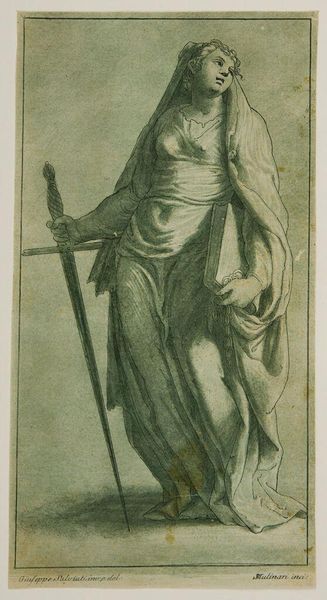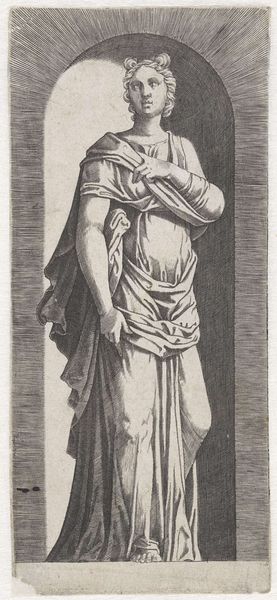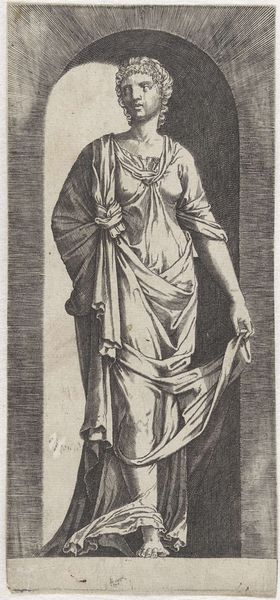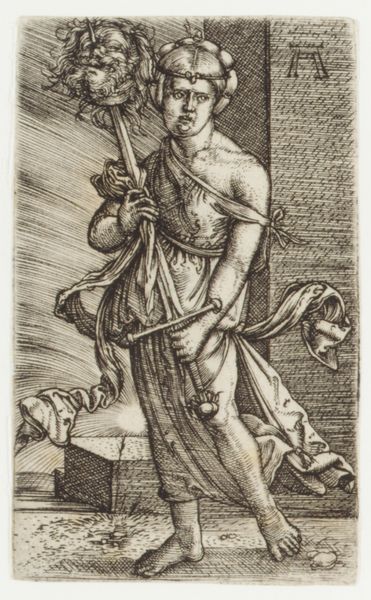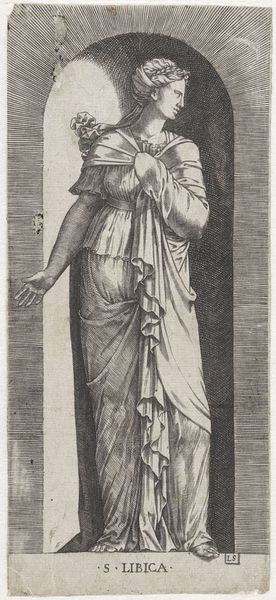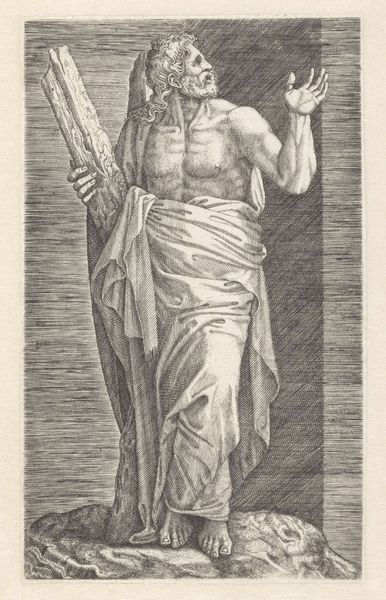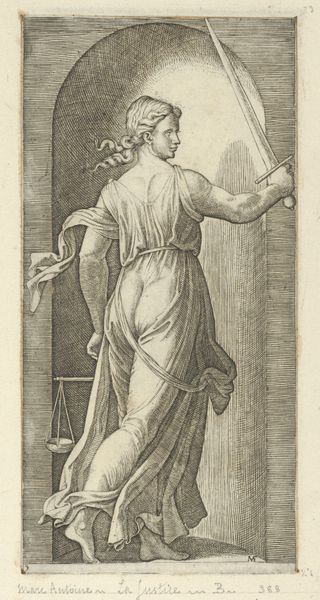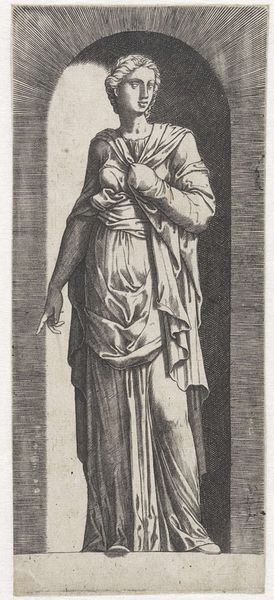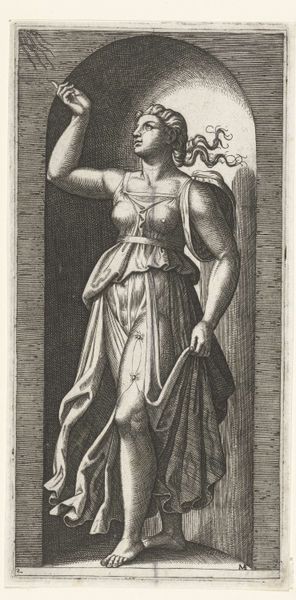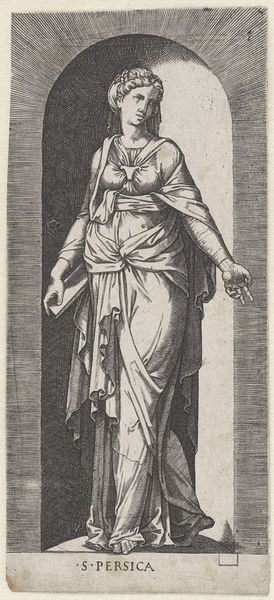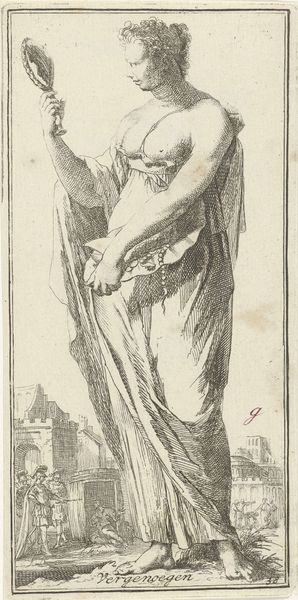
Vrouw als personificatie van Rechtvaardigheid (Justitia) met weegschaal en zwaard staand in nis 1510 - 1575
0:00
0:00
anonymous
Rijksmuseum
Dimensions: height 208 mm, width 97 mm
Copyright: Rijks Museum: Open Domain
Curator: Well, hello there. Here we have an intriguing 16th-century intaglio print residing in the Rijksmuseum collection. Its title is "Vrouw als personificatie van Rechtvaardigheid (Justitia) met weegschaal en zwaard staand in nis," which translates to "Woman as a personification of Justice (Justitia) with scales and sword standing in niche." Editor: It's quite striking! The severe pose of the figure gives me the sense of both calm assessment and impending action. The draped fabric has a restless, flowing feeling, although she is contained in that tight frame. Curator: Precisely! The engraving, thought to be by an anonymous artist and made sometime between 1510 and 1575, really captures the temperament and symbolic meaning of Justice. Justice is a cornerstone of social order and heavily featured in artwork during this period. What I find fascinating here is that Justitia, here rendered in exacting detail in intaglio print, becomes accessible as an ideal. It has been widely collected, shared, and considered in relation to justice systems, of course, but also ideas about truth-telling during social upheaval, the Protestant Reformation being among them. Editor: Yes, these standard symbols are incredibly powerful, aren't they? The sword held aloft represents the enforcement of law, the power to act, and scales—are a far more intricate metaphor. Here the composition draws our eye not just to the scale but to her assured stance. You feel the psychological weight of these responsibilities pressing on her. Curator: It’s compelling, that the allegorical and historical intersect so profoundly in works such as these, and perhaps explain their continuing popularity, well beyond any immediate topical concern. Justice becomes more than an abstraction; she is an ideal—the work also allows us to see a perspective on how early modern Europeans envisioned power. Editor: Ultimately, what’s so interesting about imagery from this time is seeing how people have returned to the visual language, time and time again. Justice is blind, as we so often hear, but this image serves as a reminder that, no, people really *see* it—as an essential figure.
Comments
No comments
Be the first to comment and join the conversation on the ultimate creative platform.

